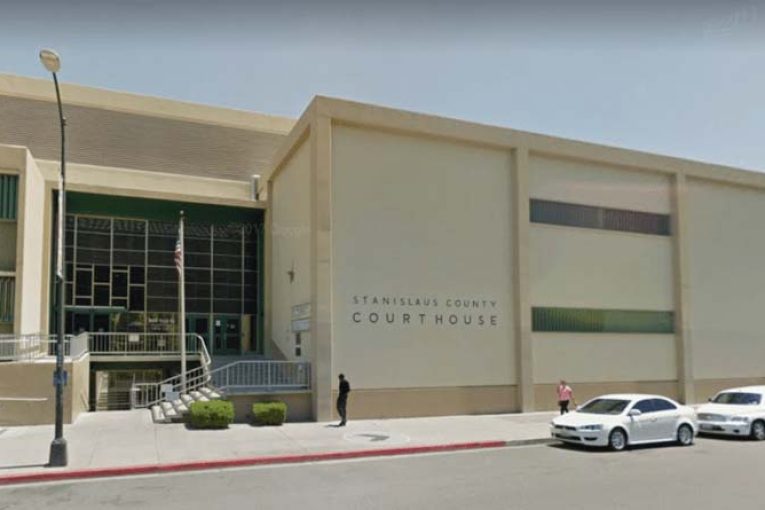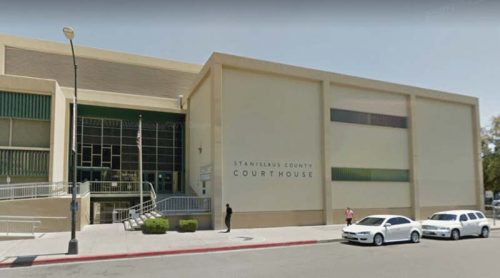

By Michael Apfel
MODESTO, CA – During preliminary motions in the criminal case involving a man’s two counts of alleged felony sexual abuse, the judge here in Stanislaus County Court Thursday allowed evidence of a phone call despite the defense concerns the evidence was inadmissible.
Both sides were ready to go to trial Thursday. Jurors were pre-screened, so the parties went over preliminary motions, two of which discussed the contentious issue of whether evidence of a complaint made by one of the alleged victims could appear in trial.
Motions in limine began with Deputy District Attorney Larissa Jones making her case as to the admissibility of the phone call, stating, “Your Honor, Jane Does 1 and 2 disclosed to the officer before they made their statements to the detective. I believe the officer should be able to testify to that fact, and that Jane Does 1 and 2 should be able to testify as to whether they told anyone else in that time period.”
The defense objected under hearsay grounds, also objecting to the evidence’s potential danger to unduly prejudice the jury.
Judge Shawn Bessey, presiding over the case, clarified whether the prosecution’s exception could be applied to statements made to law enforcement, asking, “As far as the officer is concerned, how is that a disclosure to somebody that is usually not a law enforcement officer?”
The DDA assured the judge the case law supported her argument.
“My understanding of the case law is that it can be a disclosure to law enforcement,” Jones said. “Under People v. Brown, complaints are admissible if there is a delay or if they’re made in response to inquiries. Even when questioned on something about the allegation, that complaint is considered fresh and can come in. This is all happening within a day. The disclosure happens to a boyfriend, and then that boyfriend alerts a family member, and within 24 hours, the police are contacted, and Jane Does 1 and 2 both disclose the circumstances.”
The defense pushed back, not convinced that the nature of the statements qualified under the hearsay exception.
“I don’t think that applies, Your Honor, because in this case, the officer was interviewing the girls about the allegations themselves, and also the detective was interviewing the girls about the allegations as well,” the public defender said.
The PD added, “During the interviews, I believe the officer asked the girls if they told anybody, and they said they’d talked amongst themselves before, and that’s it. I don’t think that qualifies as a fresh statement.”
The prosecution argued any potential delays were irrelevant to the statement’s admissibility.
“Fresh complaints are admissible even if there is a delay between the actual act and the disclosure,” Jones said, adding, “It goes to weight, not admissibility. [The evidence] is not being used for the truth, it’s just that they did disclose previously, and the jury can consider that when assessing credibility.”
As to the issue of hearsay, Judge Bessey stepped in one last time to clarify the DDA’s request.
“All right, you’re just asking about the fact they called the police, not about what they said necessarily?” the judge said.
“I would call the officer to the stand as an offer of proof and talk about his involvement, whether he interviewed Jane Does 1 and 2, and whether they disclosed anything that, based on his training and experience, is a violation of the code,” Jones said.
With one last bite of the apple, the defense assured the court he believed the evidence was inadmissible hearsay.
“I’m confused,” the public defender said. “I’m not sure that the statement falls under that exception. Like I said before, this was not a fresh complaint doctrine. I think that means if you told somebody before the cops, and they didn’t tell anybody before the cops, they told the cops everything that day. This is hearsay.”
After some consideration, the judge ultimately ruled in favor of the prosecution, allowing the evidence in for the limited non-hearsay purpose asserted by Jones.
“For the non-hearsay purpose, and that limited purpose only, I don’t think I would allow for the officer to testify to the opinion as to whether what Jane Doe 1 or 2 said constituted a violation of the law, merely that they reported it to him and told him was the defendant did to them would be a fresh complaint,” Bessey said.
The defense continued to object, expressing concerns the officer may elicit inadmissible evidence while on the stand, and the judge asked the prosecution to clarify specifically what would be elicited on the officer’s direct examination.
“I don’t know, I haven’t coached him on it. What I would seek to elicit was the fact that he was assigned to the case, met with Jane Does 1 and 2 and that they made disclosures to him about acts about what the defendant had done to them,” said the accused’s public defender.
The judge noted the uncommon nature of the prosecution’s request, still expressing his inclination to side with the prosecution.
The judge said, “[The exception] is normally disclosed to someone, someone that is either a family member, a friend, something of that nature, something to prompt an investigation. Here, we only had the immediate disclosure to the boyfriend the day that law enforcement got involved, but you want the fact that they reported to law enforcement as a fresh complaint, and that was shortly after disclosure to the boyfriend.
“Still, I agree with the People that it doesn’t matter whether it was an event that happened a year or a week ago if the complaint is fresh, based on how early of a disclosure it is to the person you’re disclosing to. That means it’s fresh to them.”
As to the final ruling for the phone call evidence, the judge concluded the evidence was admissible for the prosecution’s limited purpose.
“I would say the Q/A portion of it is hearsay, the fact that they’re talking and reporting to a police officer might fall under the fresh complaint doctrine. Their response to the question is not necessarily a fresh complaint. The fact that they’re there talking to the police officer shortly after this comes to light could be a fresh complaint.
“I’m not interested too much in what they said in response to questions as much as they were there to report to the police about what the defendant did to them. For that limited purpose, subject to in-court objection, I’m ruling in favor of the People,” added Bessey.
Following this motion, the defense moved to exclude evidence of prior bad acts due to their potential for undue prejudice, though the prosecution argued the Rules of Evidence potentially allows for uncharged acts to come in.
The DDA explained, in response, “The bad acts were a continuous course of conduct, and the jury is entitled to know that the defendant has been accused or prior acts, and they consider that for the limited purpose. It is not prejudicial in the way that it outweighs the probative value. In the phone call, he admits to the prior bad acts, so the people believes that everything should come in”
Again, the judge sided with the prosecution, allowing the evidence to come in, even in light of its potential prejudicial value.
“We’re talking about numerous events that we can’t specify what happened,” the judge said. “It wasn’t cumulative at the preliminary hearing, and it won’t be cumulative as it relates to trial. I don’t find this overly prejudicial. It’s certainly relevant, so under 1108, those would be admissible.”